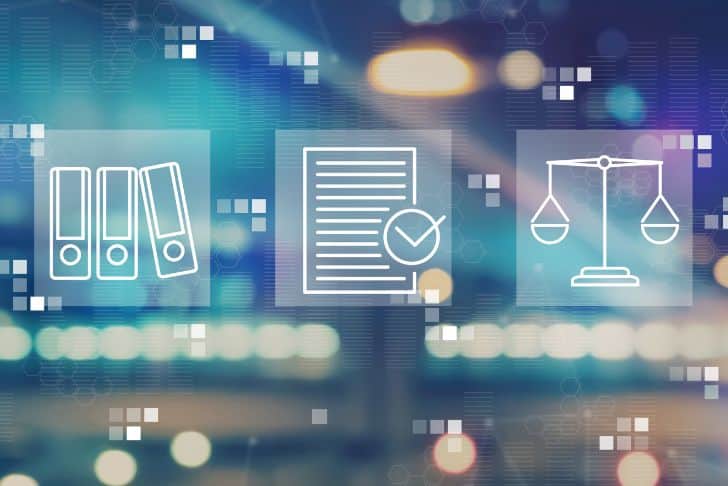As you navigate the labyrinth of regulatory structures such as the Health Insurance Portability and Accountability Act (HIPAA), the Family Educational Rights and Privacy Act (FERPA), and the General Data Protection Regulation (GDPR), the adoption of compliance automation could be your light at the end of the tunnel. The strategic use of technology such as artificial intelligence might just be your best bet for constant compliance monitoring. It does not only aim to replace manual, error-prone processes, but also consolidates all regulatory procedures, facilitating effective action planning and policy implementation.
With the ability to categorize and safeguard specific data and systems according to the relevant regulations, automated compliance tools phenomenally reduce compliance risks, grant cost savings, provide real-time reporting, and adapt automatically to regulatory changes. Particularly for organizations dealing with sensitive data, its use could mean dodging hefty penalties for non-compliance and quelling the risks attributed to human error. A leap towards automated compliance could be a strategic move in redefining your success in an ever-evolving regulatory landscape.

Understanding Compliance Regulations
The world of business operations is inextricably tied up with various compliance regulations. These standards ensure organizations operate ethically, legally, and effectively, keeping their stakeholders’ interests at the heart of their operations.
Decoding the Health Insurance Portability and Accountability Act (HIPAA)
When it comes down to the healthcare segment, the Health Insurance Portability and Accountability Act, also known as HIPAA, reigns supreme. This act safeguards the sensitive information of patients, protecting them from unauthorized access and any subsequent misuse.
Interpreting the Family Educational Rights and Privacy Act (FERPA)
As a counterpart for the education sector, the Family Educational Rights and Privacy Act, also referred to as FERPA, ensures the protection of students’ educational records. It upholds the rights of parents and eligible learners to access these records, offering a shield against unauthorized disclosure.
Comprehending the General Data Protection Regulation (GDPR)
Not confining merely to specific sectors, the General Data Protection Regulation, or GDPR, was instated to protect the privacy of individuals within the European Union. However, it does not just limit itself to EU boundaries, as any organization dealing with EU citizens’ data must comply with it.
The Basics of Compliance Automation
Living in an era dictated by technology, managing these compliance regulations through manual processes isn’t just time-consuming but also prone to errors. This is where compliance automation comes into play.
Defining Compliance Automation
Compliance automation, in simple terms, refers to the use of advanced technology and Artificial Intelligence (AI) to monitor systems for adherence to various regulations. It aims to transform these complex processes into an easily manageable framework.
Relevance and Operation of Compliance Automation
Compliance automation has elevated significance as it assures consistent adherence to legal and ethical standards. It operates by checking processes, detecting discrepancies, and recommending remedial actions, lifting the burden of manual administration.
The Shift from Manual to Automated Processes
The advent of automated procedures has superseded manual ones, rendering them ineffective and outdated. With automation, businesses can now create action plans and implement policies with more ease, reducing the potential for human error.
Successful Compliance Programs
While automation is indispensable, it’s of little use without a well-rounded compliance program in place.
Importance of a Comprehensive Compliance Plan
A comprehensive compliance plan outlines the expected conduct within an organization, strengthens accountability, and fosters transparency. It’s instrumental in maintaining strategic alignment and minimizing legal risks.
Implementing Appropriate Procedures and Policies
Appropriate procedures and policies lay the groundwork for a successful compliance program. They provide a clear roadmap for employees and set a clear standard of conduct in line with the organization’s goals and regulatory expectations.
Integration of Compliance Automation Tools
Compliance automation tools are the lifeline of a modern compliance program. They ensure a seamless administration of the compliance plan by system testing, data collection, and regular reviews of the processes.
Features of Automated Compliance Tools
Automated compliance tools come packed with features that simplify the process of ensuring regulation compliance and data security.
Categorization and Protection of Data
These tools perform a thorough sweep of your data, allocating them into different categories based on their nature and susceptibility to risks. They then implement strong safety measures to protect the categorized data.
Data Collection, Control, and Analysis
Beyond data protection, these tools also enable organizations to gather, control, and analyze data from various sources. This facilitates better understanding, leading to informed decision-making.
Automated Updates and Regular Compliance Reviews
Automated compliance tools keep pace with the ever-evolving regulatory landscape by providing the necessary updates. They also schedule regular compliance reviews, ensuring around-the-clock monitoring.

Importance of Compliance Automation in Implementing Regulations
Being regulatory compliant is non-negotiable for organizations, and automation plays a pivotal role in maintaining this compliance.
Automation in HIPAA
For healthcare organizations, automating HIPAA compliance entails continuous monitoring of their systems for potential threats and vulnerabilities. It helps in identifying and patching these issues promptly, ensuring they maintain the highest level of data protection.
Automation in FERPA
For educational institutions, automation provides a streamlined way to monitor, manage, and secure students’ educational records. It thereby facilitates compliance with FERPA and averts any potential mishandling of data.
Automation in GDPR
For businesses dealing with EU citizens, automating GDPR compliance ensures that they meet the data protection requirements effectively. It provides an efficient way to manage, control, and protect personal data, aiding in compliance with GDPR.
Benefits of Compliance Automation
Besides ensuring strict adherence to various regulations, compliance automation offers plenty of benefits that make it indispensable for modern businesses.
Risk Reduction and Cost Efficiency
By replacing manual, error-prone processes, compliance automation reduces the risk of non-compliance and subsequent penalties. Moreover, it cuts down operational costs, leading to significant savings in the long run.
Real-Time Reporting Features
Compliance automation tools possess real-time reporting features, producing detailed analytics and insights. This empowers organizations with valuable data for informed decision-making and strategic planning.
Regulatory Updates and Compliance Agility
With automated regulatory updates, organizations save the effort of manually tracking and integrating them. This ensures they stay agile and adaptive to the ever-changing regulatory landscape.

Effectiveness of Compliance Automation Tools
While the benefits of compliance automation tools are numerous, testing their effectiveness is crucial to ensure they serve the intended purpose.
Measurement of Effectiveness
The effectiveness of automated compliance tools can be gauged through system testing and regular reviews. Additionally, their agility in adapting to regulatory changes and mitigating compliance risks aids in their effectiveness assessment.
Case Studies of Successful Compliance Automation
Numerous organizations across different sectors have successfully implemented compliance automation tools. They have witnessed significant improvements in their operational efficiency, reporting accuracy, and compliance rates.
Drawbacks and Mitigation Strategies
Despite their advantages, compliance automation tools come with their set of challenges, such as technology adaptation issues and potential software vulnerabilities. However, with careful selection, regular updates, and proper training, these challenges can be easily mitigated.
Differentiating Among Compliance Automation Tools
Not all compliance automation tools are created equal. They vary in terms of features, ease of use, and effectiveness.
Comparing Various Compliance Automation Tools
Before choosing a compliance automation tool, it’s essential to compare various options. Consider their unique features, reviews, and total cost of ownership.
Criteria for Selection of Appropriate Tools
When selecting a compliance automation tool, consider its adaptability to your business requirements, ease of integration, scalability, and customer support. Furthermore, look for features that are most relevant to your organization and industry.
Understanding the Suitability of Different Tools
It’s important to understand the business’ specific needs and ensure that the chosen tool fits those requirements. Consider consulting with a compliance expert to assess the suitability of various tools for your organization.
Adopting Compliance Automation Tools in Different Sectors
Implementation of compliance automation tools differs widely among sectors, based on the type of compliance regulations they follow.
Healthcare and HIPAA
In the healthcare sector, compliance tools help to stay HIPAA-compliant by safeguarding patients’ data and offering continuous monitoring for data breaches.
Education and FERPA
Educational institutions adopt compliance tools to manage and protect students’ educational records efficiently. They ensure compliance with FERPA by monitoring the institution’s data handling practices.
Businesses and GDPR
Businesses dealing with EU citizens’ data use compliance tools to streamline their data privacy practices. They offer an efficient way to manage, control, and protect personal data, enabling these businesses to stay GDPR-compliant.
Future Trends in Compliance Automation
As compliance regulations get more stringent, the scope for compliance automation is bound to expand.
Anticipated Developments in Compliance Automation
Future developments could bring more comprehensive tools equipped with advanced AI and machine learning capabilities. These tools would offer more accurate compliance monitoring and predictive analysis, improving their overall effectiveness.
Implications for Relevant Sectors
Emerging trends in compliance automation hold significant implications for all regulated sectors. Better automations could mean less manual labour, lowered costs, and fewer penalties due to non-compliance.
Preparing for the Future of Compliance Automation
To get ready for future advancements in compliance automation, organizations should start by embracing the current automations, invest in employee training, and stay updated with the latest trends. This will enable them to leverage the benefits of automation to the fullest, now and in the future.
